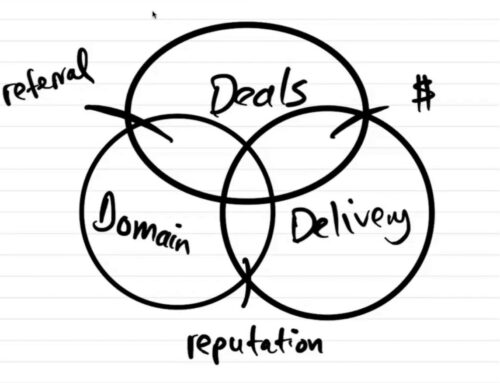If you speak regularly with an attorney, you’ll start to notice a common response: “It depends.”
This is the answer I received when I sat down with Gary Eastman, Managing Shareholder and Managing Partner at Eastman IP, and asked him if all tech companies should be pursuing patents. Gary responded, “That’s an interesting question, because there is no one answer. It’s really a product and company-based answer.”
Even if the answer isn’t clear, the question is worth asking, because patents can be an essential element for growth. Consider an innovator who created a product with a new, potentially lucrative code. In her pitch to investors, she admits that she hasn’t patented her product but will use their investment to start the patent process. Unfortunately, the investors will likely find her product more susceptible to competition, lowering her company’s credibility. The end result is a lower valuation and potentially lost deal.
Patenting is clearly valuable, but at the same time, not all companies can afford the cost and time required for patenting. How are we as CTOs supposed to gauge when a patent is necessary, especially when we don’t know how successful our products will be? The key, according to Eastman, is being aware of and proactive with IP protection from the beginning of the creative process. This article will explore patents and how CTOs can maximize their protective power.
Patents 101
The U.S. Patent and Trademark office has issued more than ten million patents! For an invention or innovation to be patentable, it must be three things: new, useful, and not obvious—new meaning not done before, useful meaning having a purpose, and not obvious meaning that a person of ordinary skill in the relevant field would not find the change self-evident. Once granted, a patent provides an inventor or innovator an exclusionary property right. To be successful in a patent infringement suit, the plaintiff must show that the defendant has copied each of the elements, that is, how it is new, useful, and not obvious.
As a restrictive right, a patent prevents other people from duplicating the invention or innovation. It does not, however, guarantee that you can create it. This notion is why patents are exclusionary rather than a guaranteed right. Eastman explained exclusionary rights with a classic example: a bucket and a pail.
Inventor A designed and patented a bucket, a cylindrical object with one open end. Inventor B designed and patented a pail, a cylindrical object with one open end and a handle. Each inventor has a distinct, legitimate patent. The patent prevents others from manufacturing the same product. Inventor A can create all the buckets that he wants, but he cannot create a pail.
But what about Inventor B? Well, while Inventor B can preclude others, including Inventor A, from manufacturing a pail, he can’t actually produce the pail without using the bucket design. So, if Inventor B wanted to manufacture his own pail, he’d first need to get a license from Inventor A for the use of the bucket. A patent is an exclusionary right because it prevents others from copying a new, useful, and not obvious invention or innovation, even if you don’t have the right to create it.
Exclusionary rights can be of particular concern in the tech industry. Open-source code is used frequently as building blocks for a new, unique code. Any new, useful, and not obvious code can be patented, but the likely legal risk rests in the obviousness element. There is a line between what is obvious and what is not, but that distinction can get fuzzy, even with an objective standard of review.
Timing Matters
Along with obviousness, timing is a big concern when seeking patent protection. In the United States, patents have a “twenty-year term,” meaning that the exclusionary rights are limited to twenty years from the date of filing. Originally, the United States government positioned its patent protections on the first-to-create model. The inventor who could prove the earliest date of creation was awarded the patent. But in 2013, the U.S. shifted to the first-to-file method. The inventor with the earliest effective filing date is now awarded the patent. For this reason, early filing, particularly for provisional patents, has become increasingly important.
International rules for filing also apply. In the United States, inventors and innovators have one year from the first offer of sale or public disclosure to file for a patent. This is not so internationally. Rules abroad dictate that inventors and innovators lose their right to a patent immediately after the first offer of sale or public disclosure. This dichotomy makes determining the scale of the market critical in the early stages of patenting.
According to Eastman, the general rule is to file provisional patents early. By filing a provisional patent, a creator has a one-year window in which to file a full utility patent. Over the course of that year, as elements of the invention or innovation change, more provisional patents can be filed. By the end of the provision patent’s term, the utility patenty typically becomes an omnibus protection for all prior patents. Multiple provisional patents are also helpful to bolster a company’s portfolio and establish a timeline of development.
One helpful tip, according to Eastman, is to file a provisional patent with a request for non-publication. In this case, the design or proprietary information is not published if and until the utility patent is granted. The non-publication request can help keep valuable information private for several years while the utility patent is granted.
Creating an IP-minded Culture
In order to take advantage of patent protections, tech companies should establish an IP-minded culture. Innovative technology must be identified, monitored, and monetized, and it should not be restricted to upper-level management. Employees at all levels can get involved. CTOs can create routine checks for patent protections, giving engineers and technicians an opportunity to be directly involved in the patenting process.
An IP-minded culture can be formalized and incentivized. This kind of awareness for IP considerations does not happen without an intentional effort by the CTO and other technology leaders. In order to encourage participation, employees that pinpoint patentable technology can be rewarded in stages, like when their patent identifications are properly reported, filed, or granted.
Let’s look at an example of how a patent can be successfully identified and monetized in an IP-minded company.
Step One
An employee, aware of the objectives and incentives for patenting, identifies a novel technology and the specific component elements that are new, useful, and not obvious.
Step Two
The employee fills out an invention/innovation disclosure report. He puts enough time and care into the report so that technical information can be easily digested by non-technical leaders.
Step Three
The employee sends the report to management that has been trained to identify valuable IP.
Step Four
Management develops a list of possibly patentable products and sends it to upper-level management. The disclosure reports created by the inventor or innovator herself are now in front of them, providing the details of the technology to be patented.
Step Five
Management conducts a cost-benefit analysis and makes business decisions with the source information.
Step Six
Management prioritizes ideas of value and selects which ones can move to the legal department for patenting.
This process advances the company’s innovation mindset. There is tremendous value in first identifying the technology and its component parts and then comparing and contrasting how it fits into the competitive landscape. During the early stages of patenting, IP attorneys often help companies create matrices to determine where IP protection can provide the most value. But without a process for engineers and technicians to identify and report proprietary material, management teams never get the opportunity to realize patents.
Along with assessing opportunity, tech companies must assess risk. Conflict and liability searches are costly but necessary. Fortunately, these searches can be narrowed to high-risk competitive spaces. By examining the areas in which conflicts are most likely to arise, a company can maximize its risk reduction for the exploratory costs. As a CTO, your goal should be early detection of IP concerns. Early detection will significantly reduce future risks and help avoid losing proprietary rights entirely.
To Patent or Not to Patent?
As Eastman noted, the decision on whether to file a patent is not always clear and can be as individualized as the company itself. The most basic evaluation tool is a cost-benefit analysis. The patent process is time consuming and expensive. The value of the patent—its exclusionary benefit—should outweigh the risks of not having a patent.
The goal of the protection process is risk mitigation, but it is not the only way to accomplish that goal. Patents come with a catch; they are detailed publications of your technology. Once the exclusionary right incentive passes, the technology becomes available to the public, and disclosure may not be in the best interest of your company.
Fortunately, other protections are available, and these alternatives can be used in combination or in lieu of a patent. There are benefits and drawbacks to each approach. For example, what can be patentable may better serve a company as a trade secret, kept private from the market, or vice versa. Trademarks and copyrights are additional ways to protect valuable IP. Know-how is a general term for operation procedures that provide efficiency or cost savings. They may not be secret, but they can be critical to the success of a business. Often overlooked, in-house contractual agreements such as non-disclosures, confidentiality clauses, and non-competes can actually be the most crucial. These protections should be implemented to protect the company from its own employees.
So, should you use patents to protect your IP? Well, it depends. But what is more important is creating a company culture that is IP-minded. The key is creating a process that starts in the lab, spurring internal motivation for your employees to be invested in the patent protection process.




